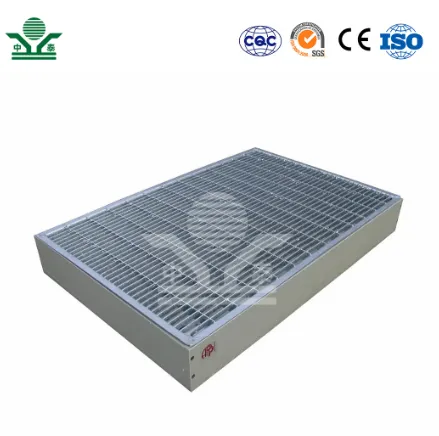Understanding the Pricing of Stainless Steel Perforated Sheets
Stainless steel perforated sheets are widely used in various industries due to their strength, durability, and aesthetic appeal
. The price of these sheets can vary significantly based on several factors, including material quality, thickness, hole size, and the overall dimensions of the sheet.One of the primary determinants of price is the grade of stainless steel used. Common grades include 304 and 316, with 316 being more corrosion-resistant due to its molybdenum content. As a result, sheets made from 316 stainless steel often command a higher price. Additionally, the composition of the alloy affects manufacturing costs, which can reflect in the final price.
Thickness plays a crucial role in pricing as well. Thicker sheets typically cost more due to the increased material and processing necessary to manufacture them. The most common thicknesses range from 0.5mm to several millimeters, and customers must balance the required durability with their budget constraints.
stainless steel perforated sheet price

Hole size and pattern also impact the cost of perforated sheets. Larger holes or complex patterns may require more intricate manufacturing processes, leading to higher production costs. Conversely, sheets with smaller holes or simpler designs might be more economical. The spacing between holes can also influence pricing; tighter spacing can reduce the strength of the sheet, affecting its utility for specific applications.
Another critical factor affecting pricing is the size of the perforated sheet. Standard sizes are typically less expensive because they allow for more efficient production processes. Custom sizes may incur additional charges due to the need for specialized cutting and fabrication techniques.
Market conditions and supply chain factors can significantly influence stainless steel prices. Fluctuations in raw material costs, including the price of nickel (a key component in stainless steel), can lead to price volatility for finished products. Additionally, the demand for stainless steel in various industries, such as construction, automotive, and food processing, can drive prices up or down.
In summary, the price of stainless steel perforated sheets is determined by various interconnected factors, including the grade of stainless steel, thickness, hole size, and pattern, as well as market dynamics. Understanding these influences can help buyers make informed decisions, ensuring they select the right product for their needs while remaining within budget. As industries evolve and demand for high-quality materials continues, staying abreast of price trends is essential for both buyers and suppliers.
-
The Best Metal Mesh Solutions: Expanded Aluminum Metal vs. Expanded Stainless Steel Metal
NewsSep.10,2024
-
Round Perforated Sheets vs. Hexagonal Perforated Sheets vs. Embossed Perforated Sheet Metal
NewsSep.10,2024
-
Perforated Metal Sheets
NewsSep.10,2024
-
Experience The Excellence Of Stainless Steel Grating
NewsSep.10,2024
-
Discover the Versatility Of Metal Mesh Expanded Forming Machines
NewsSep.10,2024
-
Discover The Advantages Of Steel Grating For Sale
NewsSep.10,2024
Subscribe now!
Stay up to date with the latest on Fry Steeland industry news.

